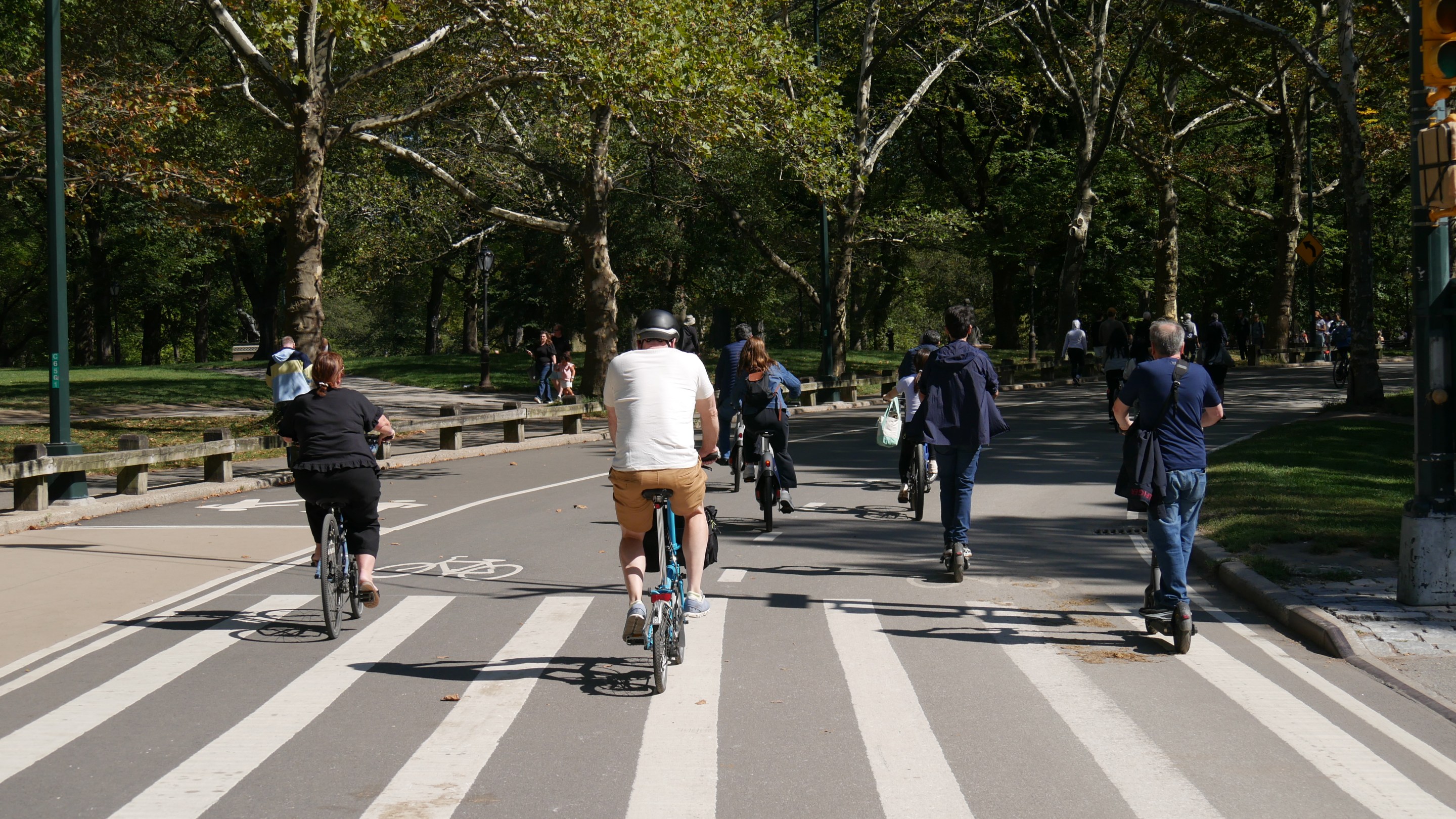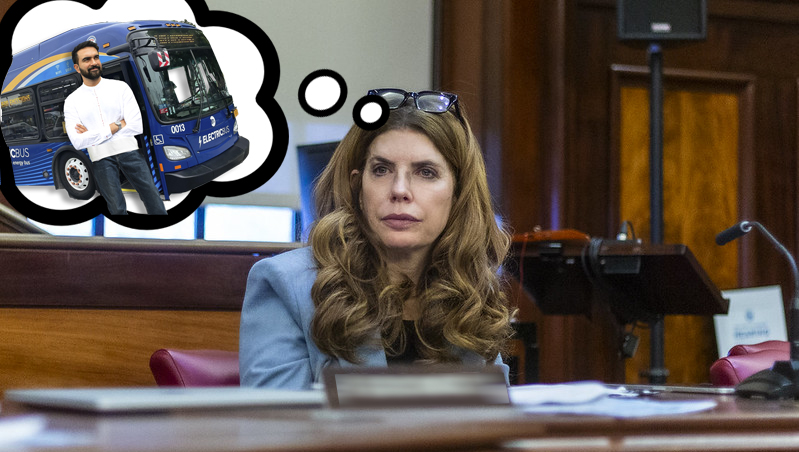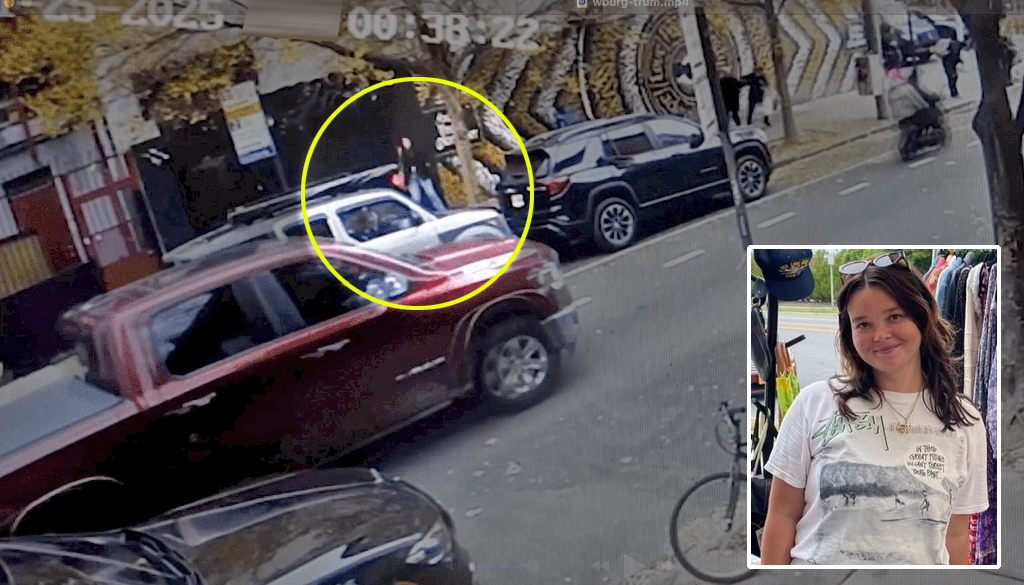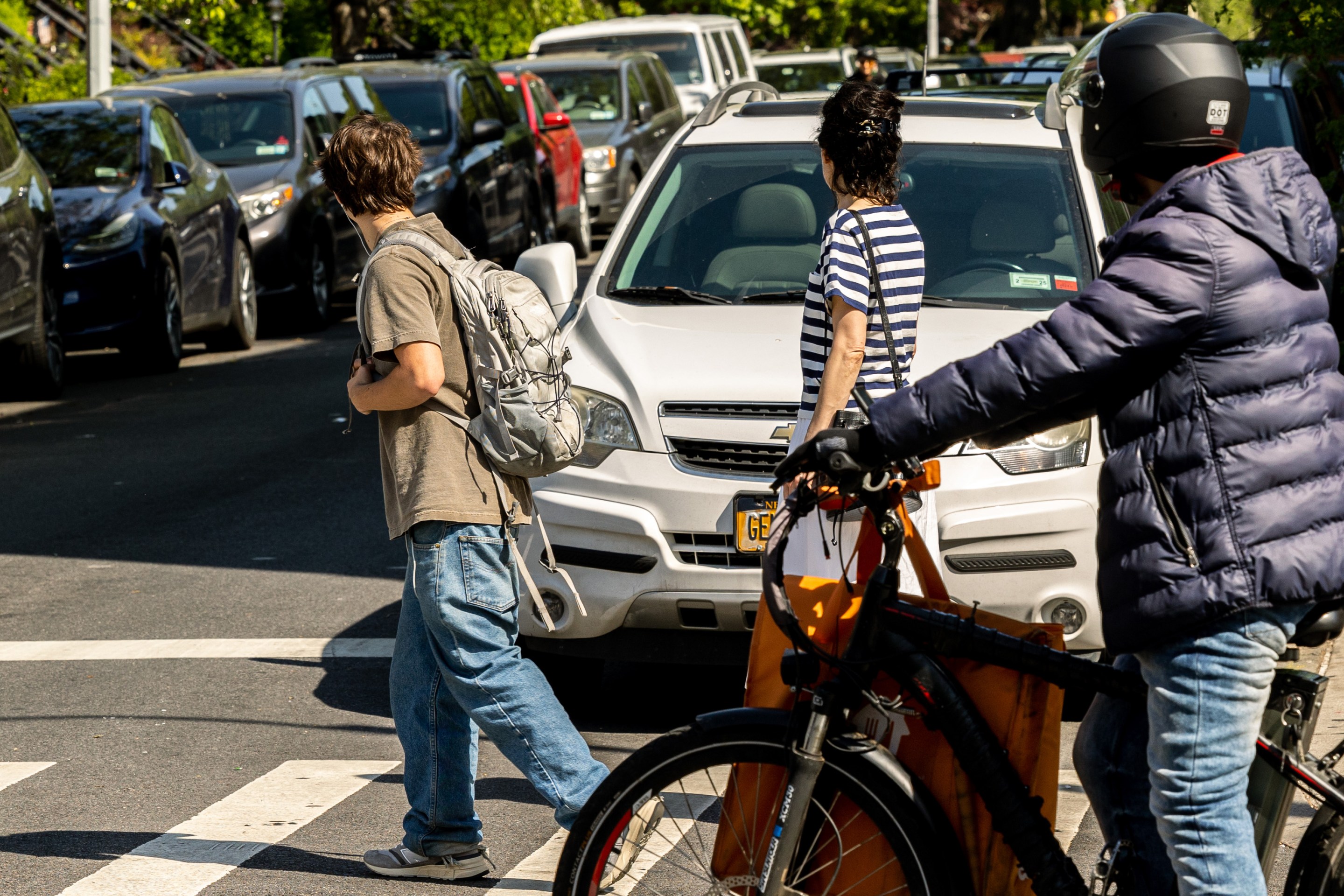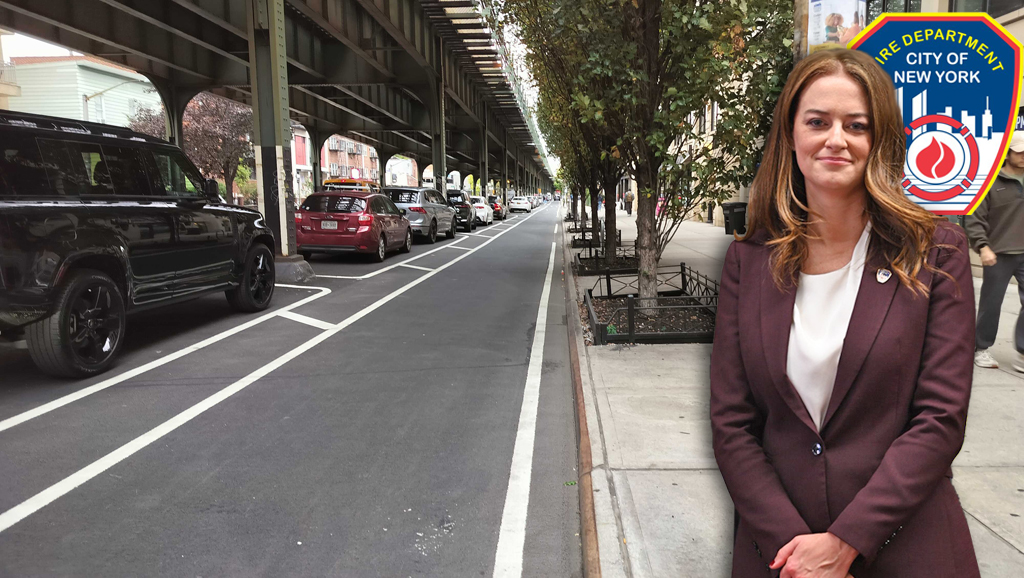The city must build protected bike paths around and through Central Park to curb the ever-growing demand on its loop paths, rather than giving in to zealots trying to simply ban bikes in the green haven, advocates say.
The popular park's interior roads were recently restriped in hopes of organizing the many people moving at different speeds, including tourists, residents, horse carriage drivers, commuters, acoustic cyclists and e-bike-using delivery workers.
But the increase in parkgoers for quick and safe transportation has drawn ire from some Manhattanites who, according to the New York Times, now have to "battle" for space in what should be (but has never been) a tranquil paradise.
Instead of a total ban on e-devices, however, the city should provide more safe and direct on-street cycling infrastructure on all four sides of the park and on its car-dominated transverses — an infrastructure improvement that would solve virtually all of the conflicts, one Manhattan cycling booster said.
"A cycle track around the park would get a ton of use and it’s going to take pressure off of Central Park," said Chris Sanders, a co-chair of the Transportation Alternatives Manhattan activist committee. "That would solve like 99 percent of whatever the perceived problem is for Central Park itself."
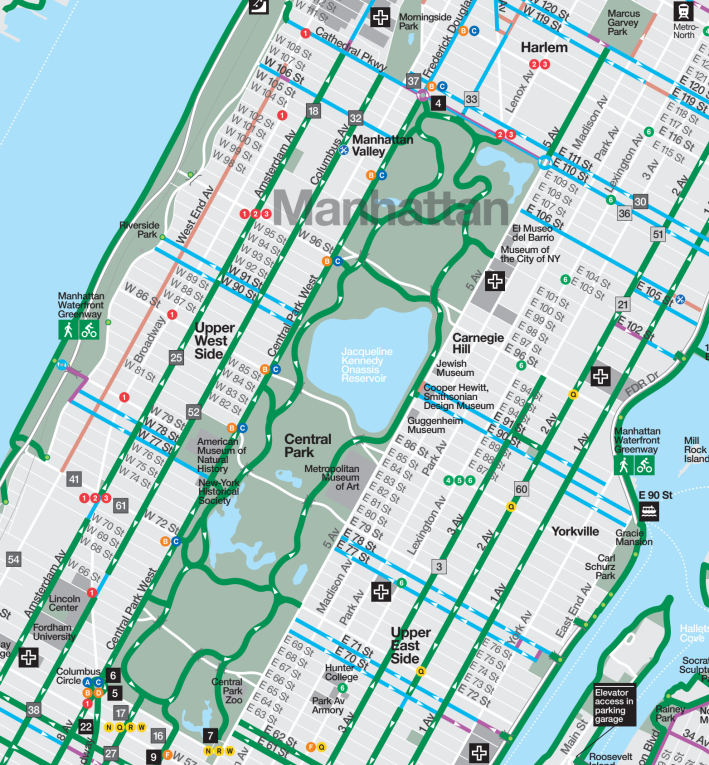
The past is prologue?
Central Park's six-mile inner roadway is windy and hilly. Before former Mayor Bill de Blasio banished cars from the park in 2018, as many as 2,500 drivers per hour would race through the greensward, ruining it for everyone.
Since those dark days, many cyclists and e-bike riders choose the park drives over the avenues because it's car-free and they don't have to stop for red lights.
The city has made few strides in reducing the pressure on Central Park as a bike conduit.
In 2019, after the horrendous killing of cyclist Madison Lyden, Central Park West got a one-way northbound quasi-protected bike lane. Commuters sometimes use it in both directions – proving the demand for bi-directional travel infrastructure.
But no such infrastructure exists on the East Side; Nevertheless Fifth Avenue gets plenty downtown bike traffic despite there being no dedicated path.
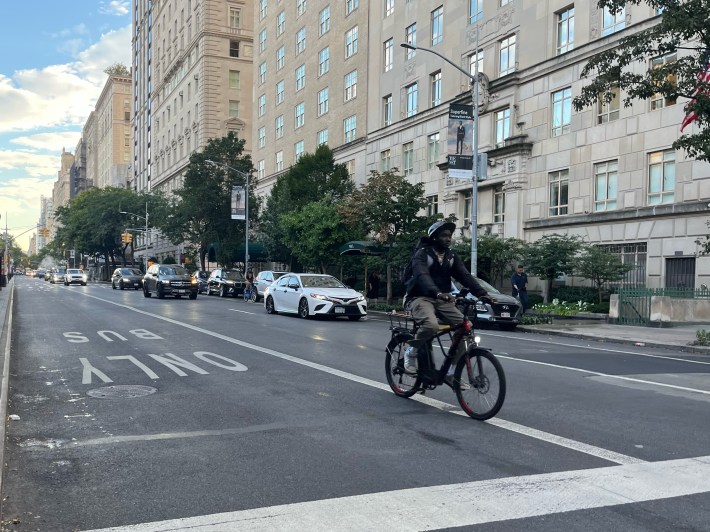
A protected and direct way up and downtown would boost cycling to and from the Manhattan core – especially as congestion pricing tolls discourage private car trips below 60th Street – while keeping the park's loop clearer for recreational visitors.
Other city parks have enjoyed two-way bike paths for more than a decade, and edges around parks actually work particularly well for those designs, city transportation planners have said.
Brooklyn's Prospect Park – which also went car-free seven years ago – now has most of its boundary covered by protected two-way bike paths, including on Prospect Park West, Flatbush Avenue and Parkside Avenue. But there are still gaps with no safe cycle paths on its Prospect Park Southwest and Ocean Avenue sides, and the car-dominated vortex that is Grand Army Plaza poses a grand barrier at the park's arrow tip northern entrance.
"There’s a massive untapped demand" for two-way bike lanes around the Central Park, said Paul Krikler a bike advocate on Manhattan's East Side. "It’s like the Hudson [River] Greenway. Before that was built, no one thought about how many people would be using it."
Gaining the 'edge'
City transportation planners like to put two-way protected bike lanes alongside parks and other green spaces, because there are fewer or no intersecting cross streets.
DOT calls that an "edge condition," as it recently argued for an extension of a two-way path around Green-Wood Cemetery in Brooklyn. The agency has been able to deploy that design at other edges such as on Vernon Boulevard in Queens and on the Shore Front Parkway in the Rockaways.
The design "takes advantage of the edge condition ... delivering a protected bike lane with minimal interaction with vehicles," DOT wrote. But that immediately raises the question: why not install it along all parks?
Uptowners have long yearned for better infrastructure along the park and nearby. A past campaign by Transportation Alternatives called for a wrap-around bike lane and better cross-town connections.
The Department of Transportation studied a two-way path for Central Park West before deciding to install just a northbound path in 2019. DOT officials at the time concluded that two travel directions would be too complicated to throw into the mix of the four lanes of car and bus traffic going both ways as well.
Southbound bike traffic would have to weave around oncoming buses at the 22 stops. Their contraflow lane would also be "counterintuitive," and "difficult for drivers to seem," according to a DOT presentation to local Community Board 7 at the time [PDF].
DOT could have installed a separate traffic signal for these left turns, but that would have caused "multiple-block queuing" of cars, agency officials argued.
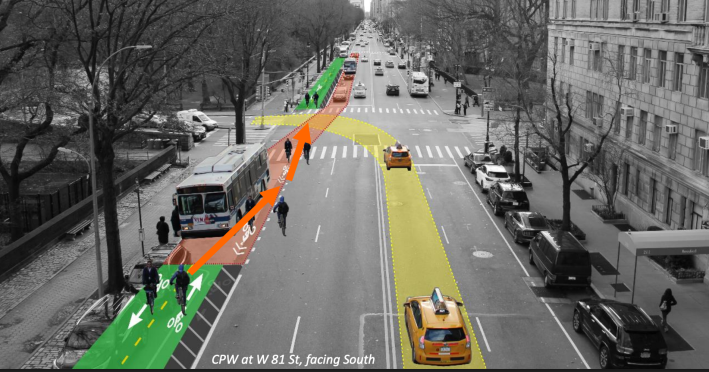
The agency's mistake was to squeeze in the bike lanes within the existing highway-like road configuration that offers up five lanes to the movement and storage of vehicles in one of the most transit-dense parts of the city, said one Upper West Side advocate.
Transportation designers could have instead converted Central Park West into a northbound-only road, which would free up space for a two-way bike path, a dedicated bus lane and separate bus boarding islands – like this design devised by Carl Mahaney, director of StreetopiaUWS, which shares a parent company with Streetsblog.

"Right now it’s completely over-designed for cars; the bike lane feels very provisional," he said.
The "protected" bike lane only has paint and plastic sticks shielding cyclists from roaring car and bus traffic, and both types of motor vehicles still pull in at stops and at the transverses.
Cyclists, meanwhile, already routinely use it both ways, making a clear case for the pent-up demand.
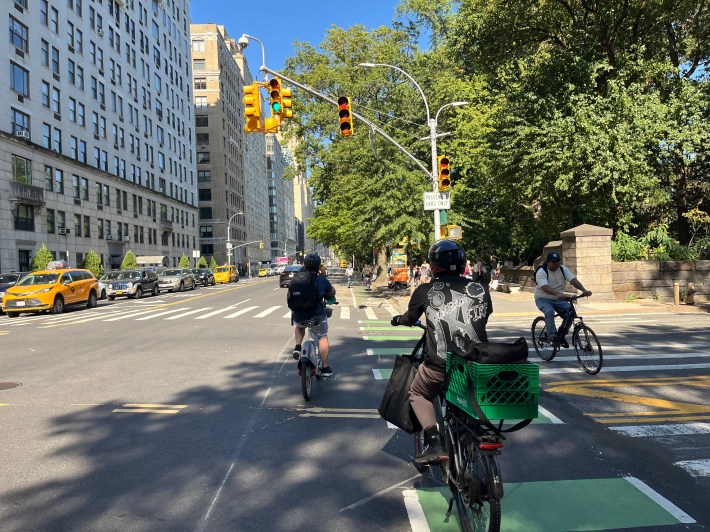
Over on Fifth Avenue, which is one-way southbound, there are no bike lanes and cyclists have nothing but the bus lane to avoid general car traffic.
A de Blasio-era two-way bike path stretches for 10 blocks of Fifth Avenue uptown, from Marcus Garvey Park to 110th Street, but it stops at the northeast corner of Central Park.
"I used to bike there a couple of times, but then it just stops at 110th and then it’s like, 'Oh OK,'" said Sanders, who has pushed for a bike network in Harlem.
The north end at 110th Street has an unprotected bike path going east and mere sharrows going west. The south side at 59th Street — the park's southern border — has no bike path whatsoever.
'Transverse' city
Then there are the four crosstown transverses on 66th, 79th, 86th and 96th streets, which are currently funnel cars and buses across Central Park.
The dangerous design allowed a USPS truck driver to run over and kill 71-year-old cyclist Jeffrey Williamson, who was riding up the bike lane, but was knocked down by the postal worker as he turned his vehicle into the 86th Street Transverse in 2021.
The Central Park Conservancy, the private group that maintains the park, last year endorsed a proposal to replace some barely used and crumbling pedestrian paths with protected cycle lanes. Such a plan would give bike riders a quick and easy way from the East Side to the West Side without having to go into the park at all — direct routes that are not currently available.
The revamps were slated to start with the 86th Street Transverse, but DOT has yet to move on any of those cross-cutters.
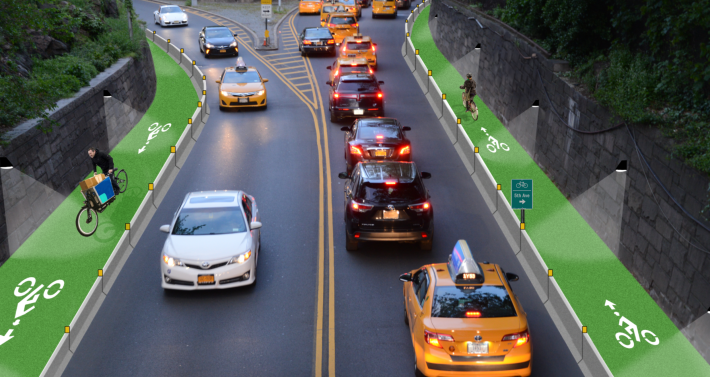
Making at least some of the transverses more accessible to cyclists will be key to reducing the number of people riding through the park, according to the uptown advocate.
"It would be a game-changer and would be highly utilized by a broad cross-section of cyclists," Mahaney said. "Anyone who is serious about reducing those kinds of conflicts [in the park] should get absolutely behind more on-street infrastructure to give people more options."
The Conservancy and DOT did not respond to a request for comment.
